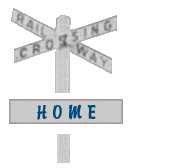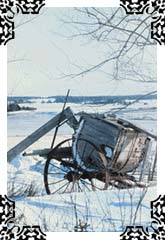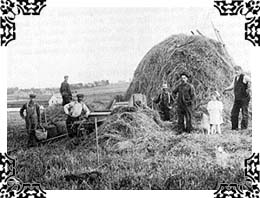








 At the opening of the
twentieth century, up to 22,000 Islanders were directly
employed in the farming industry, almost a third of the
population of the province at the time. But agriculture
was more than just a job on the Island-- it was an entire
way of life. The family bond could not separated from the
farm, and land was passed from generation to generation
as a birthright. Communities like Kensington also built
themselves up on the fat of the land, as crop returns
paid the schoolteacher's salary, helped build the churches,
and bought goods in local shops. As went farming, so went
the entire town.
At the opening of the
twentieth century, up to 22,000 Islanders were directly
employed in the farming industry, almost a third of the
population of the province at the time. But agriculture
was more than just a job on the Island-- it was an entire
way of life. The family bond could not separated from the
farm, and land was passed from generation to generation
as a birthright. Communities like Kensington also built
themselves up on the fat of the land, as crop returns
paid the schoolteacher's salary, helped build the churches,
and bought goods in local shops. As went farming, so went
the entire town.
Although the number of Island farmers saw a
steady decrease in the first half of the century, down to
13,000 by 1950, the amount of acreage in production did
not decrease-- and has even increased. The undeniable
fact behind these figures is the move away from the
family farm and toward specialized and mechanized
cultivation. Changing times have meant changes to how
Islanders practice and understand farming. The
self-sufficient, mixed farm has given way to a
large-scale, even multinational form of agriculture, a
shift which continues to influence the character of
Island life as a whole.
![]()
 Most farmers in the
early twentieth century worked on the traditional family
farm. Like the land, farming practices were also passed
down from generation to generation, by word-of-mouth and
by example. From the time they could walk, children were
expected to start learning how to collect eggs and milk
cows. There was always something else to be done, because
on these mixed, self-sufficient operations, everything
from the food on your plate to the sweater on your back
often came directly from the farm itself.
Most farmers in the
early twentieth century worked on the traditional family
farm. Like the land, farming practices were also passed
down from generation to generation, by word-of-mouth and
by example. From the time they could walk, children were
expected to start learning how to collect eggs and milk
cows. There was always something else to be done, because
on these mixed, self-sufficient operations, everything
from the food on your plate to the sweater on your back
often came directly from the farm itself.
The Traditional Farmer | Farm Women | Mixed Farming
![]()
Nicknamed the 'Garden of the Gulf,' Prince Edward Island
has always had a wide variety of crops growing in its
soil. While it is famous around the world for its seed
and table potatoes, Island fields certainly have more in
the bud than spuds, especially since potato production
demands an effective system of crop rotation if the soil
is not to become depleted. The farmer has always needed
to be an expert on his land, knowing how to set
fertilizer levels and fight weeds and insects. But
farming also means coming to terms with those elements
beyond your control, such as weather, prices, and the
health of family members.
Potatoes | Other Crop Varieties | Fertilization | Tending the Land
![]()
In addition to caring for their land, mixed farmers had
to know how to tend to their livestock. Because most
family needs were met by what they produced themselves,
every farm had a menagerie of animals to rival Noah's
ark, from chickens and geese to cows and goats. Sometimes
a lack of feed became a problem, especially for early
farmers, and farmers always had to remain on the lookout
for disease. The silver fox industry is a fascinating
footnote to Island farming history. In the 1920's, the
raising of these foxes for their rare and beautiful fur
touched off an Island version of the 'silver rush.'
![]()
With new amenities that allowed farmers to heighten
production, and rising market demand, the local farming
sector responded by developing a wide range of new
institutions and organizations. The Kensington Dairy Association was
established to manage the farmer's increased milk supply,
and in 1945 expanded to become the Kensington
Co-operative. Canada Packers provided a feed outlet and a
poultry and egg-grading plant, and a grain elevator and a
potato-processing plant also appeared on the Kensington
landscape. Through 4-H and provincial fair associations,
children and their parents alike exhibited their animals
and crops, taking pride in their work and sharing hints
about better farming practice.
Dairy Association was
established to manage the farmer's increased milk supply,
and in 1945 expanded to become the Kensington
Co-operative. Canada Packers provided a feed outlet and a
poultry and egg-grading plant, and a grain elevator and a
potato-processing plant also appeared on the Kensington
landscape. Through 4-H and provincial fair associations,
children and their parents alike exhibited their animals
and crops, taking pride in their work and sharing hints
about better farming practice.
